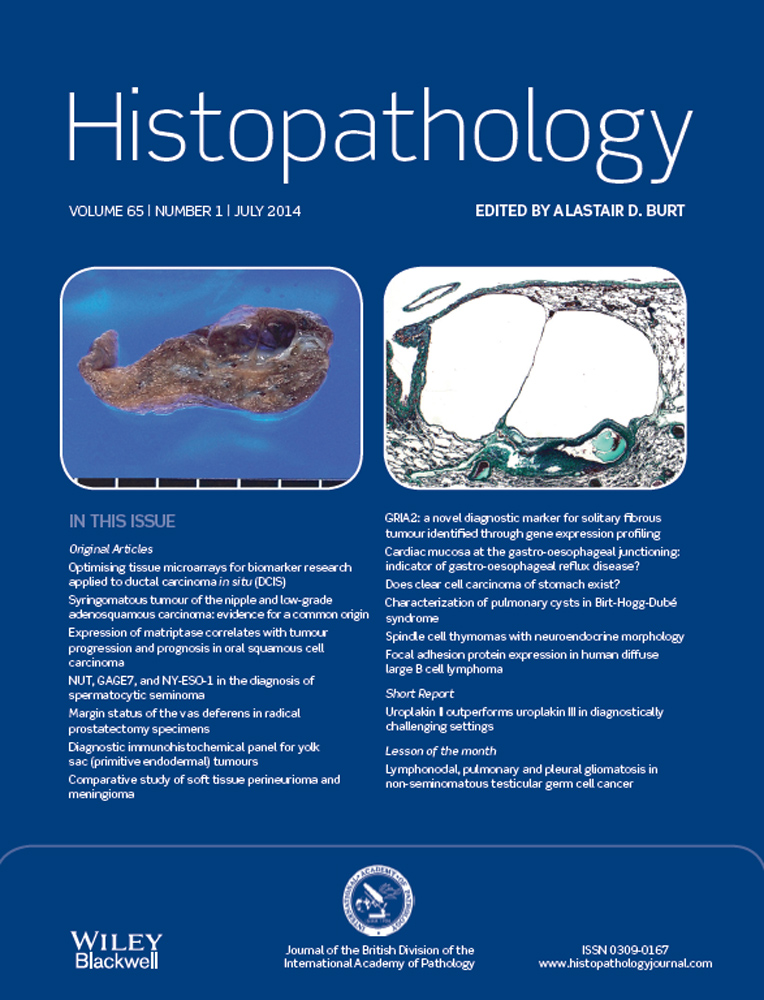Virtual tissue microarrays: a novel and viable approach to optimizing tissue microarrays for biomarker research applied to ductal carcinoma in situ
Abstract
Aims
Tissue microarrays (TMAs) are effective tools for performing high-throughput standardization analyses of biomarkers, but evidence indicating the core number required to be representative of the whole tumour is lacking. Ductal carcinoma in situ (DCIS) is a non-obligate precursor of invasive breast cancer. The number and size of cores that can best represent a DCIS lesion are unknown. Rather than performing extensive experiments using several variants of physical TMAs, the aim of this study was to develop a ‘virtual TMA’ approach that is effective at optimizing biomarker discovery and validation.
Methods and results
Whole DCIS sections from 95 patients were evaluated by immunohistochemistry for oestrogen receptor (ER), progesterone receptor (PgR), HER2, and Ki67. Histoscores were generated manually for ER, PgR, and HER2, as well as percentage positivity for Ki67. Slides were scanned using the FDA-approved Ariol SL50 Image Analysis system, and the virtual array (V-Array) module was used. Virtual cores created virtual TMAs, and our validated scoring classifiers were applied. Automated histoscores and percentage positivity were determined, and compared against increasing numbers of cores. The optimal number of cores was based on concordant results between virtual TMAs and corresponding whole sections.
Conclusions
We have shown that virtual arrays constitute an important tool in digital pathology in both research and clinical settings.




